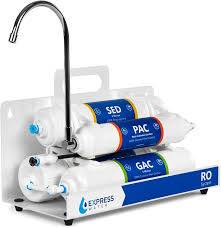In order for a reverse osmosis system to work effectively and efficiently, it’s vital that the one you choose to use for your business not only does what you require of it, but that it is designed to suit your needs.
When faced with the myriad choices on the market, it’s easy to get overwhelmed because, let’s face it, we’re not all scientists. It can be very difficult to understand every aspect of how a reverse osmosis system works and any challenges we might be faced with – not only in its installation but beyond, through its lifespan. It’s highly advisable to have a professional come onsite and determine the correct reverse osmosis system to suit your unique needs, but below we offer some top general tips to be aware of.
Understanding Your Water
One of the most important things to do at the beginning of the process is to have your feed water analysed in order to determine its quality. This should also include its feed temperature (this is particularly relevant in hotter climates) and the conditions/uses for which it is to be used in your operations.
Beware of Chlorine and Iron
Chlorine and iron are elements that are very tough on a reverse osmosis system membrane, so if they appear in high volume in the water you’re treating, they may need to be removed first through pre-treatment options including filtration, aeration or use of an antioxidant.
Checking Water Hardness
Water hardness is another issue for the delicate membranes of an RO, so it’s important to ensure you operate it in tandem with anti-scalents or a softening or filtration system that reduces the calcium and magnesium (by replacing those elements with sodium ions) before it goes through the RO process. If you fail to do this, the membranes of your reverse osmosis system will clog and become ineffective very quickly.
Make Maintenance a Priority
The company that installs your system should, if they are reputable, be able to provide a thorough and regular maintenance programme to ensure it remains at its optimal performance. Some cheaper systems do not provide the facility to clean the membranes so you should consider this aspect very carefully when making your choice – because it might end up costing you more in the long term if you have to replace the membranes.
Look for a CIP (clean in place) option when choosing your system, which allows for easy cleaning without the risk of causing any damage. Cost vs. Benefit
The installation of an RO system can represent a considerable investment for a small business, but it’s important to weigh up the costs against the considerable benefits. More and more businesses are making water treatment plants a priority, not only to meet compliance, but also to improve their operations and bottom line.
It’s important, however, to ensure the right one for your needs; so choose a reputable and collaborative company that can supply and install one that suits your individual requirements.
Sean Clifford is an advisor at AllWater Technologies Ltd, a wholly independent company providing consultation and water treatment equipment, including reverse osmosis system and effluent treatment plant options. Bringing together a host of experience and specialist knowledge, the company is committed to building and maintaining long-term relationships and creating maximum value and benefit for their customers.


